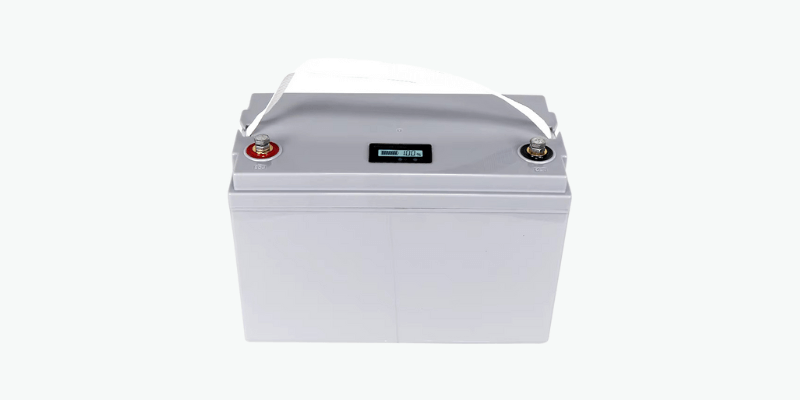Voor succesvolle varen- en mariene avonturen is het essentieel om een betrouwbare stroombron te hebben. Mariene batterijen zijn ontworpen om betrouwbaar vermogen te bieden voor boten en kunnen harde omstandigheden zoals blootstelling aan zoutwater, trillingen en extreme temperaturen weerstaan. Deze blogpost behandelt de basisprincipes van mariene batterijen en hoe u de juiste kunt kiezen voor uw behoeften.
Wat zijn mariene batterijen?
Mariene batterijen zijn speciale batterijen die zijn ontworpen om boten en andere mariene voertuigen te power. Ze verdragen trillingen, extreme temperaturen en vocht.
Er zijn drie soorten mariene batterijen: starten, diepe cyclus en dubbele doeleinden. Startbatterijen zorgen voor een sterke motorontsteking, terwijl de diepe cyclusbatterijen een stabiel vermogen leveren voor uitgebreid gebruik van elektrische systemen. Dubbele batterijen bedienen beide functies.
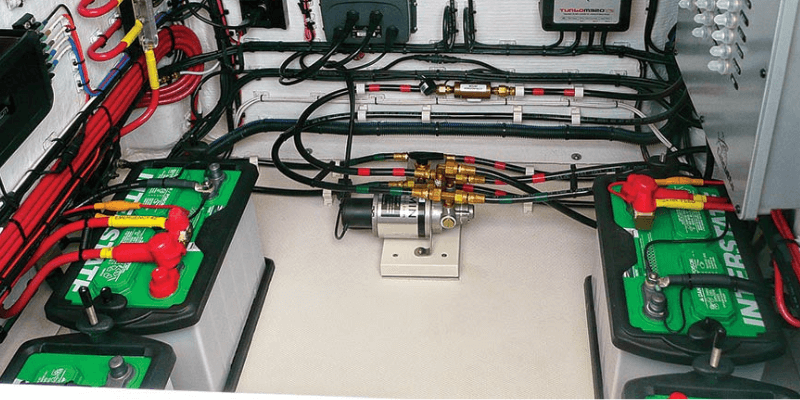
Startbatterijen
Mariene startersbatterijen, of mariene sollicitatiebatterijen, zijn loodzuurbatterijen die zijn ontworpen om bootmotoren te starten. Ze bieden hoge crankerende versterkers (CA) en koudecrankerende versterkers (CCA) voor snelle ontsteking.
CA meet de stroomafgifte bij 32 ° F (0 ° C) gedurende 30 seconden, geschikt voor mildere klimaten. CCA geeft de maximale stroom aan die een batterij kan leveren bij 0 ° F (-18 ° C), cruciaal voor het begin bij koud weer wanneer motorolie dikker is. Voor meer informatie over CCA, kijk op onze blogpost “Wat betekent CCA op een batterij. "
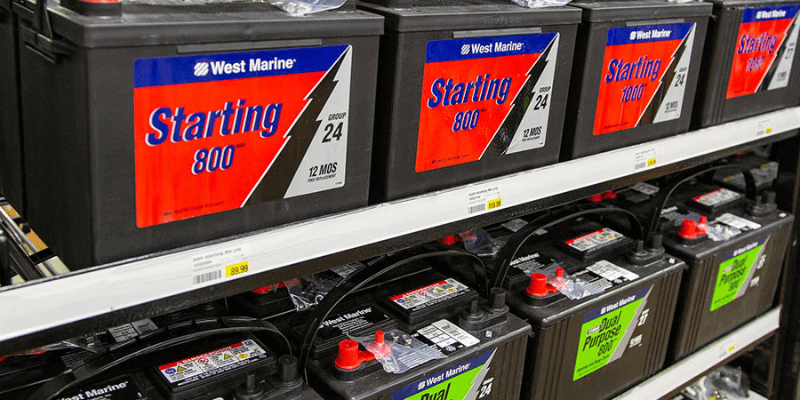
Diepe fietsbatterijen
Diepe cyclus Mariene batterijen bieden stabiele stroom gedurende langere periodes, waardoor ze ideaal zijn voor continue toepassingen.
In tegenstelling tot het starten van batterijen, die korte uitbarstingen van hoge stroom voor motor beginnen, hebben diepe cyclusbatterijen dikkere loodplaten om herhaalde diepe lozingen en opladen te weerstaan. Ze voeden verschillende bootsystemen en apparaten, waaronder lichten, motoren, viszoekers, radio's en koelkasten.
Deze batterijen zijn nodig voor grote stroom tijdens vaaractiviteiten, waardoor watersporters kunnen genieten van tijd op het water zonder zich zorgen te maken over onderbrekingen.

Batterijen met dubbele doeleinden
Dubbele batterijen combineren solliciterende en diepe cyclusfuncties, die de kracht bieden om een motor te starten terwijl ze aan boord elektronica worden ondersteund. Veel moderne diepte-cyclus mariene batterijen bieden deze mogelijkheid.
Voor kleinere boten met minder veeleisende motoren is een hoogwaardige dual-purpose batterij voldoende. Grotere boten met krachtige motoren of meerdere accessoires hebben echter meestal een speciale ringbatterij en afzonderlijke dieptecyclusbatterijen nodig voor het voeden van accessoires.
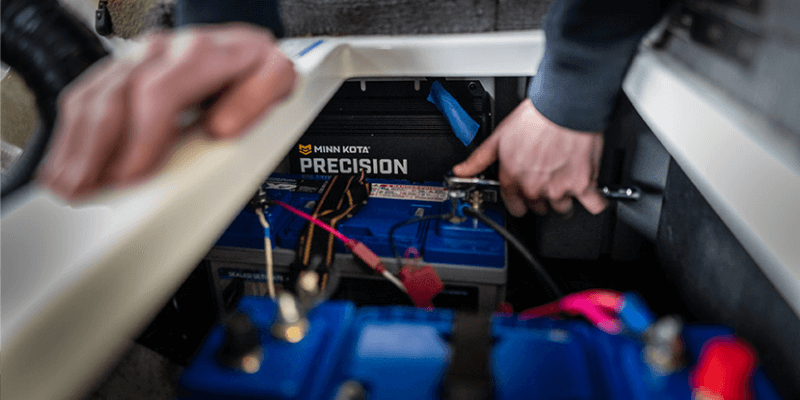
Hoe verschillen mariene batterijen?
Mariene batterijen zijn ontworpen om de uitdagingen van de mariene omgeving aan te gaan, inclusief beweging, trillingen en vocht. Ze hebben verbeterde constructie en componenten die batterijplaten beschermen tegen trillingsschade tijdens ruw water of hoge snelheden.
Om de veiligheidsrisico's aan te pakken, omvatten veel mariene batterijen vonkbergers om te voorkomen dat explosies tijdens het opladen toevallig vonken.
Bovendien weerstaan ze corrosie van zoutwater door duurzame materialen zoals loodlegeringen te gebruiken.
Ten slotte bieden mariene batterijen verschillende terminale typen en maten voor compatibiliteit met verschillende bootopstellingen en elektrische systemen, waaronder gespecialiseerde ontwerpen om korte circuits te voorkomen of snelle-connect-functies mogelijk te maken.
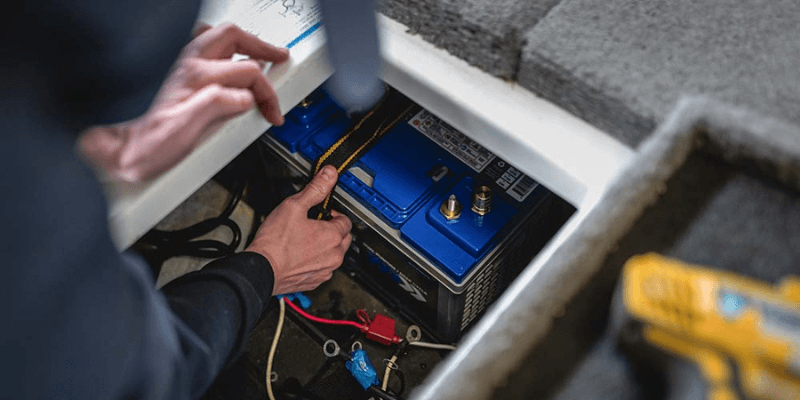
Welke maat marine -batterij heb ik nodig?
Mariene batterijen zijn er in verschillende maten om aan verschillende vermogensbehoeften te voldoen en passende specifieke bootcompartimenten, na specificaties in de branche-standaard BCI Group Grootte. Grotere maten bieden een hogere capaciteit voor het voeden van meerdere elektronica, terwijl kleinere maten geschikt zijn voor boten met lagere stroomvereisten. Het kiezen van de juiste maat zorgt voor optimale prestaties, efficiënt ruimtegebruik en betrouwbare kracht tijdens bootavonturen.
Lithium of loodzuur?
Lithiumbatterijen zijn om verschillende redenen superieur aan loodzuurbatterijen voor mariene toepassingen. Hun hoge energiedichtheid zorgt voor meer stroomopslag in een lichter pakket dan loodzuurbatterijen, waardoor de bootprestaties en brandstofefficiëntie worden verbeterd. Ze hebben ook een indrukwekkende levensduur van de cyclus, die duizenden ladingscycli duurden die de vervangingsfrequentie vermindert.
Bovendien laden lithiumbatterijen sneller en efficiënter op, waardoor u meer tijd op het water krijgt.
Hoewel lithiumbatterijen een hogere kosten vooraf hebben, bieden hun duurzaamheid en levensduur op lange termijn kosteneffectiviteit. Loodzuren zijn daarentegen budgetvriendelijk met lagere initiële kosten en een bewezen veiligheidsrecord in de maritieme industrie. Ze zijn met name geschikt voor starttoepassingen vanwege hun gebrek aan overstroombeveiliging.
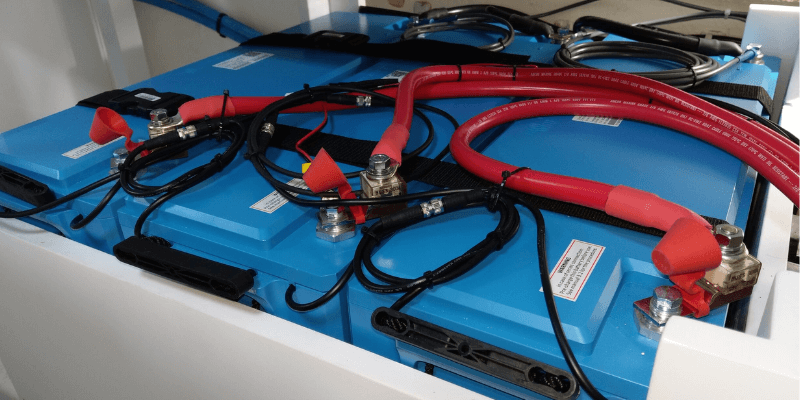
Kan ik een mariene batterij opladen met een gewone oplader?
U kunt een mariene batterij opladen met een gewone oplader als deze overeenkomt met de spanning, maar deze wordt niet aanbevolen. Regelmatige opladers kunnen niet voldoen aan de specifieke behoeften van mariene batterijen met diepe cyclus, waardoor overladen of overmatige warmte riskeren. Het is het beste om een speciale mariene batterijlader te gebruiken die is ontworpen voor dieptecyclusbatterijen met het juiste oplaadprofiel.
Voor mariene lithiumbatterijen, een toegewijde lithiumlader Zal het proces versnellen. Hoewel het een extra kosten kan zijn, vinden veel eigenaren het de moeite waard voor optimale batterijprestaties.
Hoe lang duren mariene batterijen?
Traditionele mariene batterijen duren meestal drie tot zes jaar, vergelijkbaar met autobatterijen, maar de levensduur varieert per gebruik, onderhoud en type. Het starten van batterijen duren over het algemeen drie tot vijf jaar. Diepe cyclusbatterijen zijn ontworpen voor zwaarder gebruik en duren ongeveer vier tot zes jaar. Dubbele batterijen variëren van drie tot zes jaar, afhankelijk van hun gebruik in uw schip. Maar als u LifePo4 -mariene batterijen gebruikt, kunnen ze meer dan 10 jaar duren.

